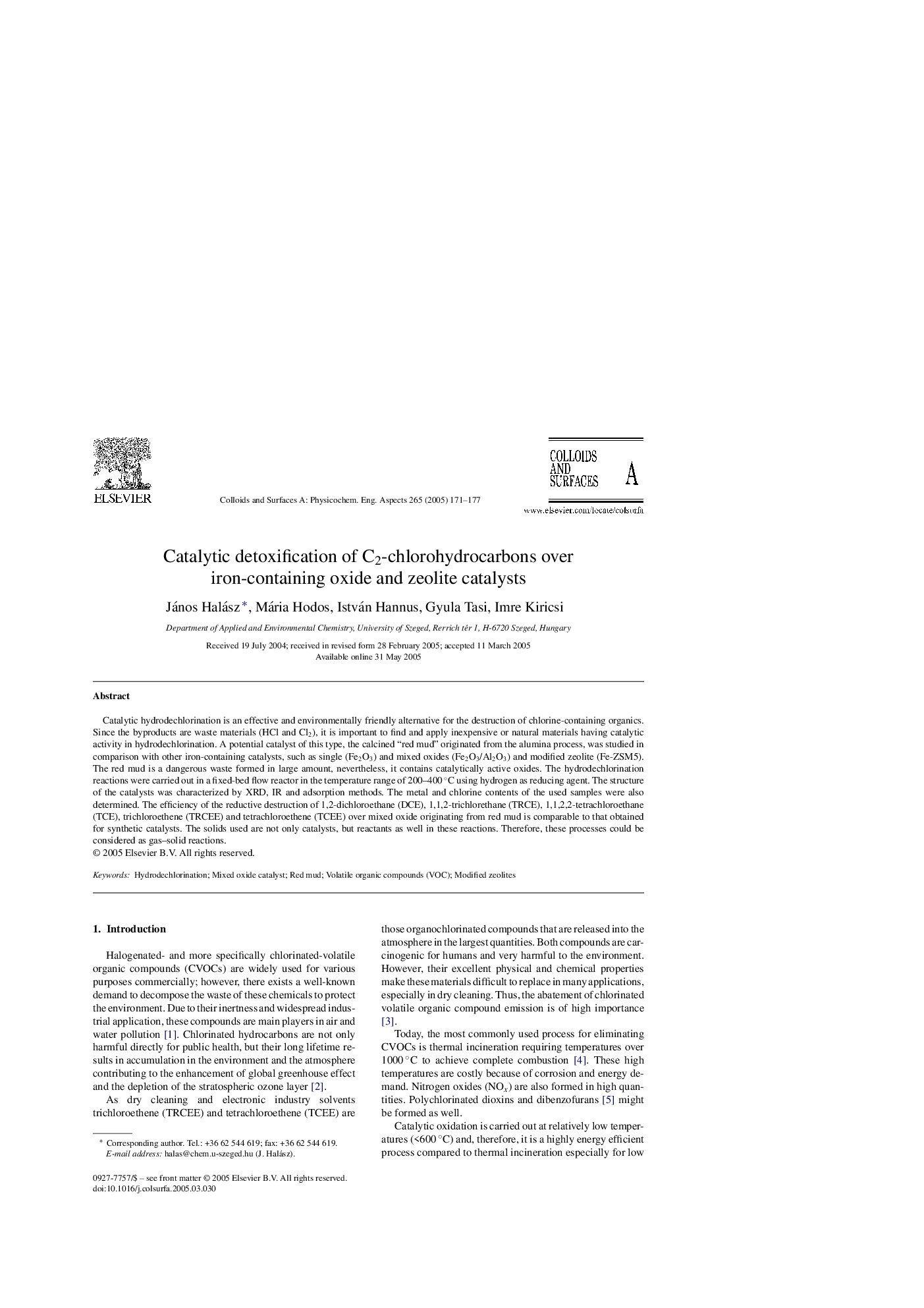| Article ID | Journal | Published Year | Pages | File Type |
|---|---|---|---|---|
| 9675697 | Colloids and Surfaces A: Physicochemical and Engineering Aspects | 2005 | 7 Pages |
Abstract
Catalytic hydrodechlorination is an effective and environmentally friendly alternative for the destruction of chlorine-containing organics. Since the byproducts are waste materials (HCl and Cl2), it is important to find and apply inexpensive or natural materials having catalytic activity in hydrodechlorination. A potential catalyst of this type, the calcined “red mud” originated from the alumina process, was studied in comparison with other iron-containing catalysts, such as single (Fe2O3) and mixed oxides (Fe2O3/Al2O3) and modified zeolite (Fe-ZSM5). The red mud is a dangerous waste formed in large amount, nevertheless, it contains catalytically active oxides. The hydrodechlorination reactions were carried out in a fixed-bed flow reactor in the temperature range of 200-400 °C using hydrogen as reducing agent. The structure of the catalysts was characterized by XRD, IR and adsorption methods. The metal and chlorine contents of the used samples were also determined. The efficiency of the reductive destruction of 1,2-dichloroethane (DCE), 1,1,2-trichlorethane (TRCE), 1,1,2,2-tetrachloroethane (TCE), trichloroethene (TRCEE) and tetrachloroethene (TCEE) over mixed oxide originating from red mud is comparable to that obtained for synthetic catalysts. The solids used are not only catalysts, but reactants as well in these reactions. Therefore, these processes could be considered as gas-solid reactions.
Keywords
Related Topics
Physical Sciences and Engineering
Chemical Engineering
Colloid and Surface Chemistry
Authors
János Halász, Mária Hodos, István Hannus, Gyula Tasi, Imre Kiricsi,
